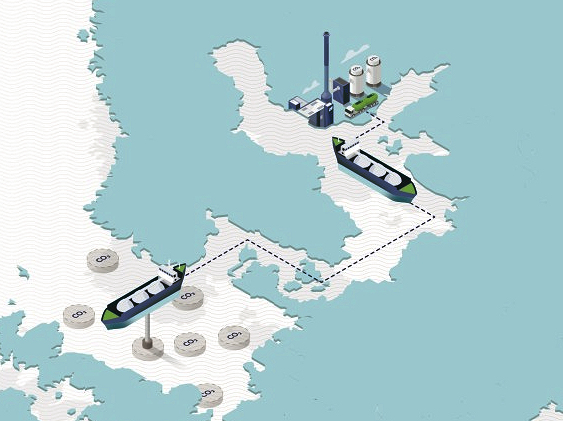
According to the current estimate, the investment decision of hundreds of millions could be made in 2027. The costs of the carbon dioxide value chain will reach billions and its implementation requires cooperation between the state and partner companies.
The environmental and emission effects produced by the energy utilization of non-recyclable waste are significantly smaller than those of waste disposal in landfills. When non-recyclable waste is burned in a waste power plant, the heat generated can be used to generate electricity and heat to heat homes and offices. However, carbon dioxide emissions are generated in the combustion process, which cannot be avoided other than by capturing the carbon dioxide.
"If the recovery project is realized, we would have an almost emission-free way of handling non-recyclable mixed household waste in the Southern Finland region. Its positive carbon footprint would be significant. To ensure that it is not recyclable, we are also planning a mixed waste sorting facility at the same time, which would return valuable materials from the contents of the mixed waste bags to circulation," says Kalle Patomeri, Director of Recycling Business.
The final disposal site for the captured carbon dioxide would be located, for example, in the territorial waters of Denmark or Norway at the bottom of the sea, or in suitable geological formations located underground on the continent.
The estimate of the costs of the recovery plant for the waste power plant area in Vantaa to Långmossebergen is around €350 million. In addition, liquefied carbon dioxide logistics to the port, a terminal for this purpose in the port, ships suitable for transporting carbon dioxide and the technology needed to pump carbon dioxide to the seabed at the receiving end are needed.
"Therefore, we need infrastructure and a value chain to take carbon dioxide to permanent geological storages. According to our estimate, the total cost of creating such a value chain is in the billions. We can't do this alone, but this requires mutual understanding and concrete cooperation between partner companies and the state," says Patomeri.
The commercial value of the captured carbon dioxide is created in the voluntary market, where biogenic carbon dioxide permanently removed from the cycle produces negative emissions, from which securities enabling emission compensation are created. Vantaa Energia could capture and store approximately 660,000 tons of carbon dioxide, of which the share of biogenic carbon dioxide would be 40-50%.
"Let's imagine that Company X operates in an industry where it is difficult to get rid of emissions quickly, because the technology has not yet developed to become emission-free, for example air transport. An airline can compensate all its emissions by purchasing carbon removal credits enabling emission compensation to the extent that, for example, they have been stored in the permanent geological storage there from our operations. The airline could then sell flights whose emissions have been fully compensated. The prerequisite for the realization of the project is that the income from carbon credits makes the project profitable for us," says Patomeri.
The pre-planning phase of the project is now starting, where the aim is to advance in licensing, zoning and, for example, acquiring partners. According to the current plan, the investment decision could take until 2027. Due to the uncertainty of licensing, regulation, technology and the market, there are significant risks associated with the project's implementation schedule, but Vantaan Energia's goal is to be carbon negative in terms of its energy production in 2030.

